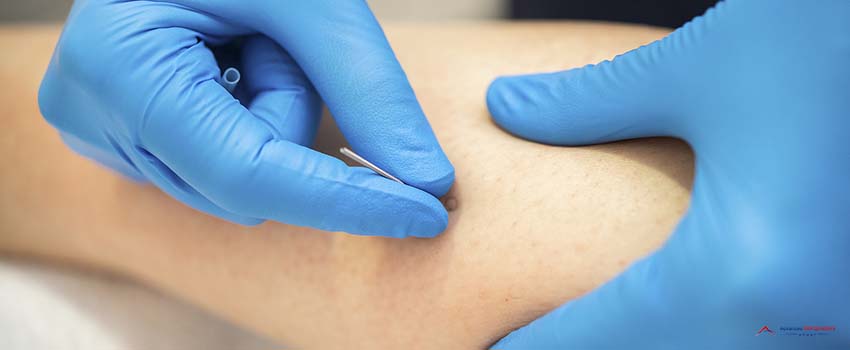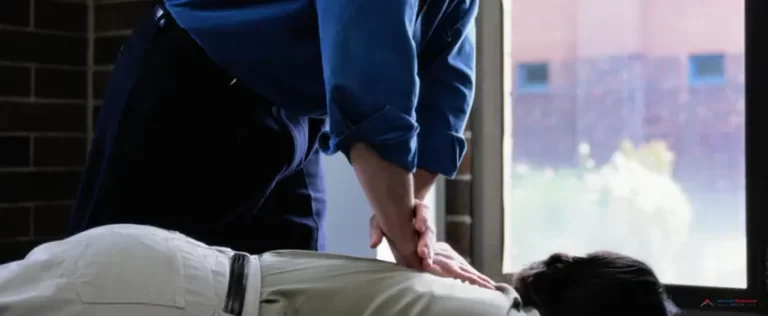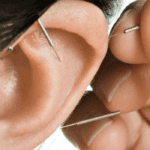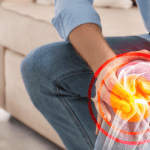Poking tiny needles into your skin may seem uncomfortable, but many swear that it provides sweet relief for severe muscle pain and mobility issues.
Dry needling is a treatment that relieves muscle tension and pain in the back, neck, shoulders, jaw, ankles, or head using fine needles.
Aside from releasing pressure and stimulating tissues, it also makes exercises and other physical therapy treatments more effective. But what is it exactly?
What Is Dry Needling?
Dry needling, or intramuscular stimulation, is a modern method to relieve muscular pain that has gained popularity in recent years. Practitioners use filiform needles, which are made of stainless steel. They have fine points, and they are not meant to inject fluids into the skin, hence “dry.”
How does dry needling work? Practitioners insert these needles into your skin in areas of hard knotted muscles called trigger points. The needles release these knots and ease muscle spasms and pain.
It utilizes two techniques:
1. In-and-Out Technique
Sparrow pecking and pistoning are some intramuscular stimulation methods practitioners use. They rely on needles going in and out of your skin and won’t stay in your skin for long. They prick the trigger points to release them. This method of dry needling requires more research.
2. Non-trigger Point Technique
Non-trigger point technique is a dry-needling technique that covers a larger area of your central nervous system. Instead of inserting needles directly in the pain area, the practitioner places needles around the pain point.
This method is based on the belief that the pain results from a larger muscular or nerve issue, not just on one specific area.
What Is the Difference Between Dry Needling Therapy and Acupuncture?
Dry needling therapy may seem similar to acupuncture because they both use needles. However, that is where their similarities end. Acupuncture is a complete system of healing based on ancient Chinese medicine that focuses on energy and meridians. It’s about balance and restoring energy flow throughout the body. Practitioners insert the needles along the meridian lines representing our organs.
On the other hand, intramuscular stimulation uses a musculoskeletal approach, where practitioners place needles in tight muscles and trigger points to alleviate tension and pain.
Intramuscular stimulation practitioners don’t require extensive training. They don’t have a regulatory agency or a credentialing board, making it impossible to tell if someone’s training is legitimate and satisfactory. If you plan to try intramuscular stimulation, look for a physical therapist or someone with a postgraduate education in health care.
What Are the Benefits of Dry Needling?
Aside from improving nerve communication and releasing natural pain relievers in your body, dry needling also:
1. Accelerates your recovery
Moving your body and physical therapy promotes healing after an injury. Adding intramuscular stimulation into the mix speeds up the recovery process.
2. Improves your range of motion
Tight and painful muscles hinder movement and physical activity, resulting in weak muscles and loss of muscle mass.
Combining dry needling with physical therapy helps strengthen muscles, restore mobility, and prevent trigger points from recurring.
3. Provides pain relief
Trigger points are linked to many conditions such as lower back pain, neck pain, joint pain, and overuse injuries. Relaxing trigger points relieve pain. It also increases blood flow that carries acidic and painful waste away and brings more nutrients and oxygen to the muscles, helping them heal.
Many patients notice a reduction in pain immediately after one session of dry needling for back pain. However, some patients may require several sessions to get the best pain relief. The severity of the trigger points and how many you have will determine your treatment plan.
4. Improves chronic health conditions
Intramuscular stimulation helps relieve the pain related to myofascial syndrome and fibromyalgia.
Myofascial pain syndrome is a condition in which trigger points form in the fascia, the connective tissue surrounding and supporting your muscles, nerves, blood vessels, and organs. One of the best treatment options for this condition is physical therapy and intramuscular stimulation.
Fibromyalgia produces widespread pain and muscle tenderness, which interfere with movement and lead to trigger point formation. Many patients with fibromyalgia experience significant improvements in their pain after undergoing intramuscular stimulation.
What Health Conditions Does Dry Needling Therapy Treat?
Patients suffering from chronic or long-term pain that isn’t improving with other pain management methods will find intramuscular stimulation extremely effective. Combining intramuscular stimulation with other therapies produces better results and pain relief.
Intramuscular stimulation treats a wide range of conditions, including:
- Whiplash
- Plantar fasciitis
- Herniated disk
- Pinched nerves
- Tendinitis
- Migraine and tension headaches
- Achilles tendonitis
- Knee pain
- Repetitive motion injuries (carpal tunnel syndrome or tennis elbow)
- Spinal problems
- Hip pain
- Shoulder pain
- Pelvic pain
- Osteoarthritis pain
- Sports injuries
- Neuropathy
- Shin splints
- Temporomandibular joints disorders
What to Expect in Your Dry Needling Appointment?
Rest easy; intramuscular stimulation does not usually hurt. Patients may feel a bit of discomfort that dissipates quickly.
Other things you might expect during your intramuscular stimulation appointment include:
- After treatment, there may be tenderness at the target site. Although this may not be the case all the time, it is best to be prepared. Don’t worry if you feel a little sore; it will be gone after a few hours or the next day later. However, visit your chiropractor if you experience pain for more than two days.
- You may also experience bruising. This doesn’t usually happen, but it’s nothing to worry about. Areas prone to bruising include the chest, shoulders, breasts, and upper legs. If you ever experience a bruise, apply some ice. Notify your chiropractor if you have any concerns.
- After treatment, you may experience an emotional reaction. This response is also normal; some people feel tired, while others feel energetic, energized, or a little dizzy. It will fade in an hour. However, if the feeling lasts longer than a day, visit your chiropractor.
- Sometimes, treatment can make the symptoms worse. However, it’s not something to be concerned about. Usually, continued treatment is required to speed up the healing process. After a few days, things should feel much better.
- In rare cases, patients might experience a negative reaction to treatment. Talk to your chiropractor immediately if you feel any severe pain, a reaction that lasts for more than 48 hours, and other symptoms.
“How much is dry needling?” you may ask. The cost of dry needling ranges from $32 to $92. Insurance may cover it in some situations, but it’s usually an out-of-pocket expense.
Relieve Your Body Pains Today
Are you ready for some relief and to see if intramuscular stimulation might be right for you?
Advanced Chiropractors Group can connect you to our affiliate chiropractors in Largo, FL. They’ll provide the best pain relief options that will suit your needs. Call us for any inquiries about dry needling for back pain and other procedures. We’ll gladly help you find the best chiropractor near you.








